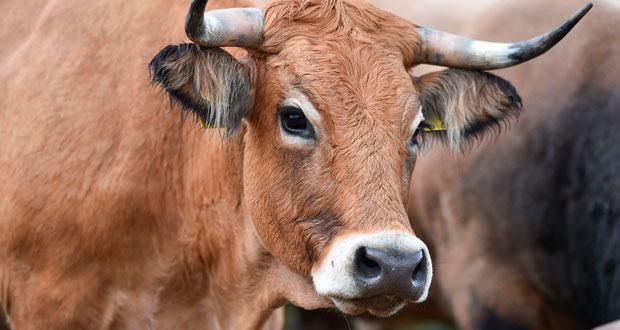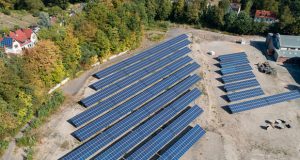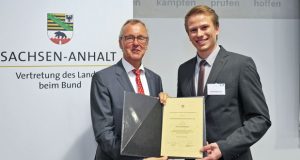Landschaftsagentur Plus GmbH, Datteln/Germany, has undertaken its first grazing project on behalf of RAG Aktiengesellschaft, Essen and RAG Montan Immobilien GmbH, Essen, in Saarland. An Aubrac herd (Figure 1) has been introduced as part of the remediation of the former Saarland refinery site in Völklingen and the Lydia tip in Quierschied. To counteract the intrusion into nature and the landscape in these areas, the site in Völklingen-Fürstenhausen is now undergoing near-natural management.
Reinhold Jost, Minister for the Environment and Consumer Protection in Saarland, and Christiane Blatt, Mayor of Völklingen, were pictured at the site yesterday.
“One of the things we had to do as part of the remediation process was to create a new habitat for the woodlarks,” explains Rudolf Krumm, authorised representative for RAG Montan Immobilien. The neighbouring 13 ha of land was prepared with this in mind. Woodlarks, which are ground-breeding birds, prefer a semi-open, structured landscape in a sunny location with places to sing and observe the surrounding area. They also need scattered vegetation near the edge of the forest, as well as dry sandy areas and clearances.
“The grazing project was the obvious choice for maintaining an open environment, as grazing is more sustainable than mowing,” explains Martin Strauß, Managing Director of Landschaftsagentur Plus. The land is now being kept clear by a large herd of Aubrac cattle. It’s not the first project of this kind for Strauß; “We have already made a great success of this type of landscape conservation in North Rhine-Westphalia.” Landschaftsagentur Plus transferred the animals to Fürstenhausen from the river meadows of the Lippe in Datteln, where they have been keeping the wetlands clear for several years. The Aubrac herd has a breeding bull and two mother cows, each with one calf and two young offspring. “We are planning to expand the grazing area by 8 ha and increase the size of the herd over the coming years,” explains Strauß.
With the introduction of the cattle herd, the agricultural land in Völklingen-Fürstenhausen is now being ecologically enhanced. The project was planned in close consultation with the responsible authorities, experienced local farmer Frank Bessoth and Landschaftsagentur Plus.
Aubrac cattle are an old, robust breed from France, and are known for their resilience, contentment and longevity. With their colouring and their eye spots, they strongly resemble their ancestors, the aurochs. (RAG MI/Si.)


